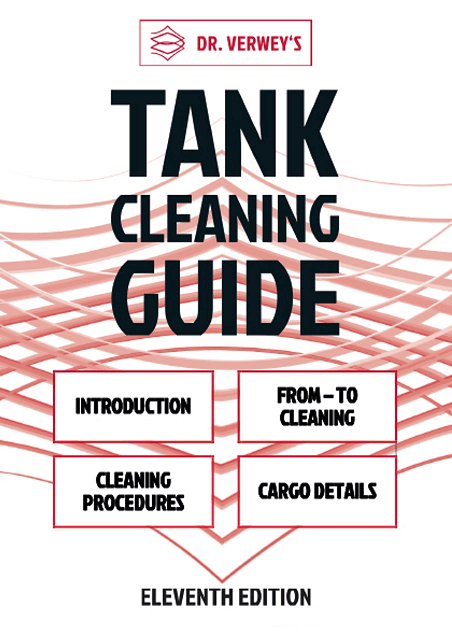Overview
This guide outlines procedures for the cleaning of cargo tanks on chemical and petroleum tankers. It contains a tank cleaning cross table, which provides cleaning guidelines for more than 400 bulk liquid cargoes. Tank cleaning procedures are listed for some 170,000 previous to next cargo combinations.
The eleventh edition features a new FROM:TO cleaning section, which makes finding cleaning procedures easy and convenient. With the help of a database and dedicated software, this edition includes clickable letter indexes to quickly navigate to the correct cargo to be cleaned.
The cargoes in this guide have been selected from the products listed in the IBC Code and in the HM (Hydrocarbon Management) 50 Guidelines of the Energy Institute.
Content
Part 1: Introduction and Tank Cleaning Knowledge
Introduction
How to use the FROM – TO cleaning
Planning of tank cleaning
Physical properties of the cargoes
Cargo Characteristics
Required cleanliness standard of the cargo to be loaded (next cargo)
Available Equipment
Surrounding Conditions
Pipelines, Valves etc.
Tank Cleaning Recipe
Method description
Additional methods not mentioned in cleaning procedures
Cleaning additives
Coating
MARPOL
Tank Inspection and Testing
Wall Wash Procedure
Wall Wash Tests
Safety
Abbreviations
Part 2: FROM – TO cleaning and Cargo Details
FROM – TO cleaning
Cleaning Procedures
Cargo Details
Introduction
The facts and information you find are collected from a global network of cleaning experts and feedback on procedures that was received from many shipping companies.
We invite you to send any information, suggestions or constructive criticisms to enable us to keep this book up-to-date and to increse its scope.
Please send them to email: info@chemserve-marine.com
Our suggestions are merely a blueprint, although well thought out and should not overrule better knowledge and experience. Often several different cleaning procedures will lead to the desired knowledge.
Whilst both the advice and information in this book are believed to be true and accurate at the date of publication, ChemServe GmbH cannot accept any legal responsibility for any errors or omissions that may be made.
ChemServe GmbH shall assume no warranty and no liability in context with any use of this publication.
Statutory tank washing requirements according to MARPOL Annex I and Annex II are not included in the cleaning procedures. All applicable pollution prevention steps according to MARPOL must be executed prior to tank cleaning.
If the cargo to be cleaned has a flash point of less than 60oC, the ROB (remaining on board) could create a flammable atmosphere inside the cargo tank. Therefore, before commencing tank cleaning, in accordance with the cleaning procedures in this guide, the cargo tank atmosphere must be either inert (Oxygen concentration below 8%), or the cargo vapour concentration must be so low that the LFL is below 10%. The applicable procedures can be found in ISGOTT or CTSG.
Whenever procedures or activities recommended in this guide appear to conflict statutory and industry guidelines such as MARPOL, SOLAS, ISGOTT, CTSG, etc. the statutory and industry guidelines must always take priority.
The cargoes in this guide have been selected from the products listed in the IBC-Code and in the HM (Hydrocarbon Management) 50 Guidelines of the Energy Institute.
Details
Number of Pages: 587
Published Date: September 2022
Book Height: 300 mm
Book Width: 210 mm
Weight: 0 kg
Author: ChemServe GmbH
Publication Date: September 2022
IMPA Code: 370689 (37 06 89)








